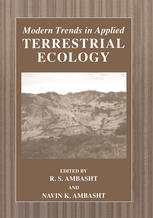

Most ebook files are in PDF format, so you can easily read them using various software such as Foxit Reader or directly on the Google Chrome browser.
Some ebook files are released by publishers in other formats such as .awz, .mobi, .epub, .fb2, etc. You may need to install specific software to read these formats on mobile/PC, such as Calibre.
Please read the tutorial at this link: https://ebookbell.com/faq
We offer FREE conversion to the popular formats you request; however, this may take some time. Therefore, right after payment, please email us, and we will try to provide the service as quickly as possible.
For some exceptional file formats or broken links (if any), please refrain from opening any disputes. Instead, email us first, and we will try to assist within a maximum of 6 hours.
EbookBell Team

4.0
26 reviewsEcology and economics have Greek roots in oikos for "household", logos for "study", and nomics for "management". Thus, ecology and economics should have complemented one another for a proper growth and development without destruction, but, unfortunately, rapid industrialization, lure for fast financial gains, and commercialization activities have led to a widespread surge in pollution load, environmental degradation, habitat destruction, rapid loss ofbiodiversity, sudden rise in rate ofextinction ofmany wildlife and wild relatives of domesticated animals and cultivated cereals and other plants, global climate changes creating global rise in temperature, and CO levels and increased ultraviolet B at ground 2 level. Although these threats to human health have led us to look to ecology for their solutions and guidance for sustainable development without destruction, the industrial and technology houses are looking for alternative methods of development and resource use methods. The two global conferences of the United Nations in 1972 and 1992, and international programs of Man and the Biosphere (MAB), International Biological Program (IBP), International Geosphere, Biosphere program (lGBP), and World Conser vation Union (IUCN), of different commissions, United Nations Environmental Program (UNEP) efforts, Ramsar Conventions (for wetlands), and World Wide fund for Nature (WWF) (for nature in general and wildlife in particular) have focused attention of ecologists, naturalists, governments and Non-governmental organizations (NGOs) toward better conservation.